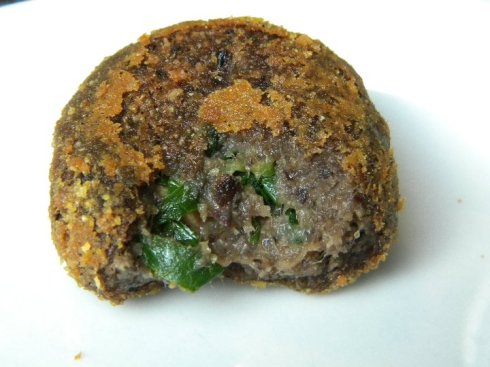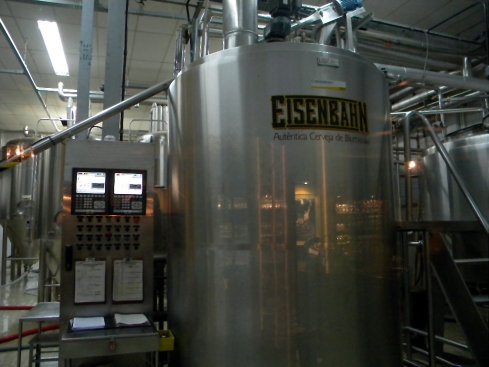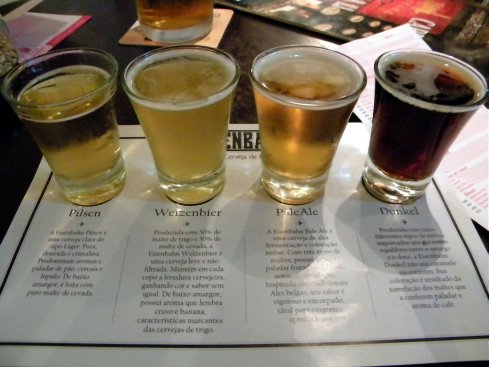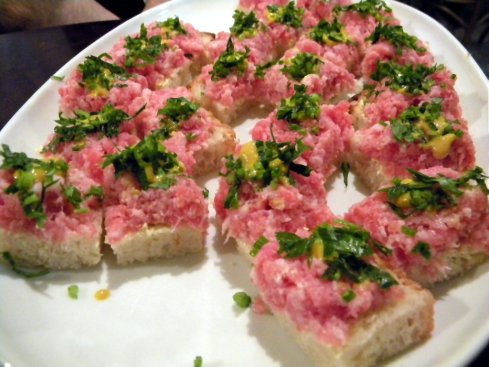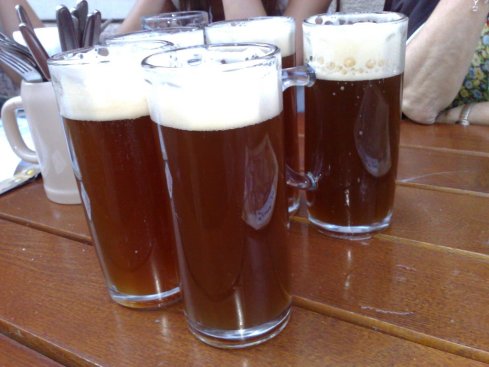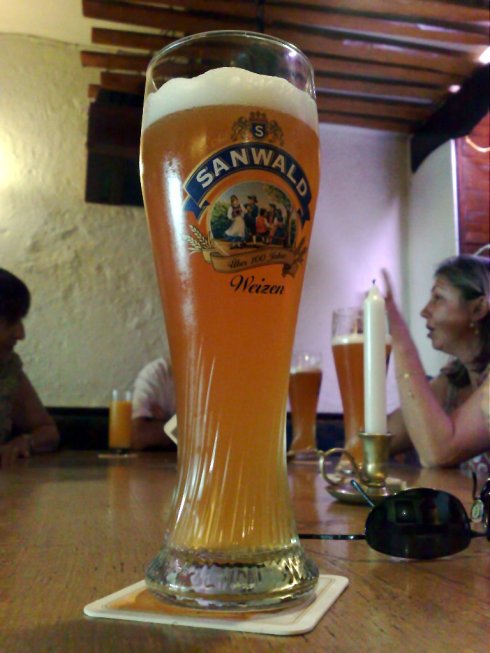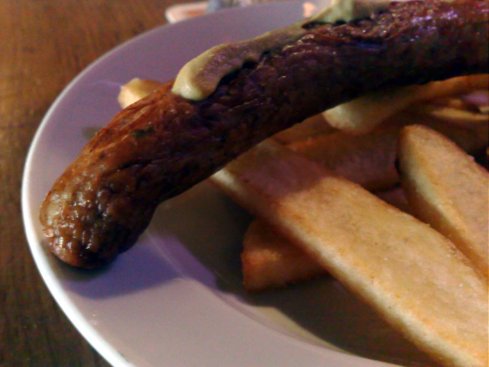I came to the wonderful city of Rio de Janeiro to meet the Michelin stared chef Mauro Colagreco of “Le Mirazur” in Menton/France. Last Friday night (Nov 19th) we had a fantastic dinner at the “Olympe” , owned by the great and mostly widely known “brazilian” (he is in fact French) chef Claude Troigros. He was not present, but I had the opportunity of meeting two other great personalities of the Troigros clan, his son Thomas (of the “66 Bistrô” and who was in fact running the Olymp kitchen) and his nephew, Cesar Troisgros, who was also with hands on the kitchen. If you want to know more about this family and their over 50 years of tradition in the culinary world take a look here. The chef Ricardo Santoro, from Venezuela, who works with Mauro in Menton, joined us later.
I’m not going to write about this dinner right now, which, by the way, was amazing. I just want to mention that Mauro was invited to have a Sunday lunch with the Troisgros family at the “Aconchego Carioca”, a typical and most acclaimed bar/restaurant in Rio. Well, to make a long story short, Mauro got sick with a relatively high fever spending the last 3 days in bed and was not able to go. Who went? Chef Ricardo and myself. For those who know the Troisgros I could stop this post right here, as enough has been said. For those who don’t I’ll share some pictures and impressions.
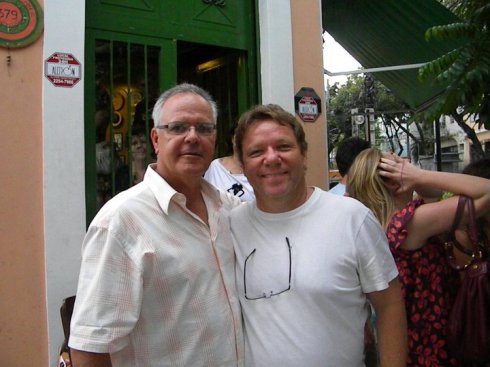
Claude Troisgros (right) and myself in front of "Aconchego Carioca". The beautiful blonde on the background is his daughter.
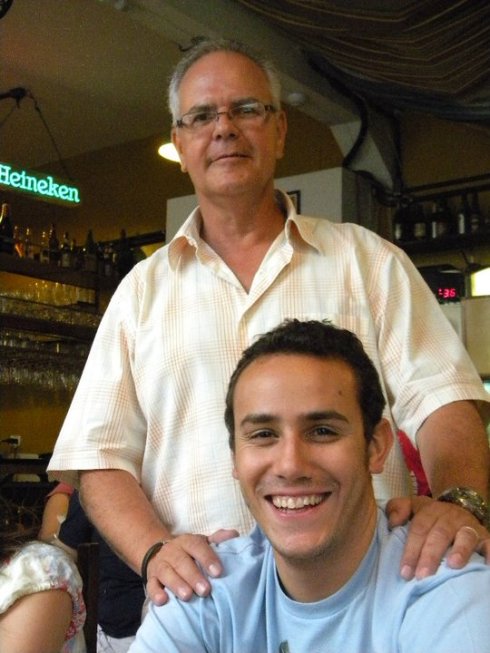
César Troisgros, Michel´s son, presently working with his uncle Claude and his cousin Thomas at "Olympe" in Rio.
Let’s talk about food.
The food, which was served at “Aconchego Carioca” by one of its pleasant owners, Katia Barbosa, had its highs and lows. Gladly mostly highs.
The highs:
1. The beers. “Aconchego Carioca” has over 100 different beers to choose from. A hard task. We had very nice ones, all Brazilians, specially 2 produced by “Colorado” and one from “Bamberg“. I recomend.
2. The appetizers
Those are, no doubt, the strongest items on the menu. Small snacks you can eat while drinking the cold beers (they have to be relatively cold in Rio). Below are my recommendations:
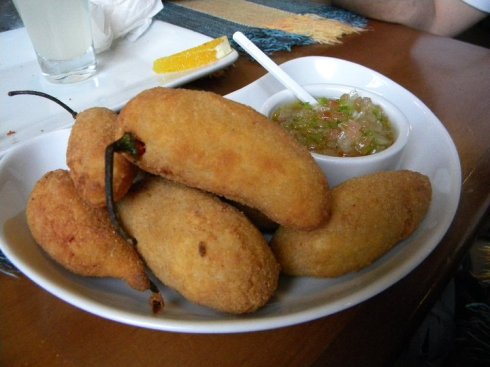
Fried breaded "Ladie's finger" pepper (Capsicum baccatum) filled with sun-dried meat and cream cheese (I believe that's the best translation to the original name - please, correct me if not))

Thinly sliced "jiló" (Solanum gilo - scarlet eggplant?) with a balsamic reduction (I believe) topped with cheese and rose pepper.
I could spend all day eating things like that in the wonderful company of the Troisgros, specially of Thomas and his lovely wife Roberta.
3. The desserts
Two of the desserts served made me use my utensils more than twice (as a matter of fact more than a dozen times):
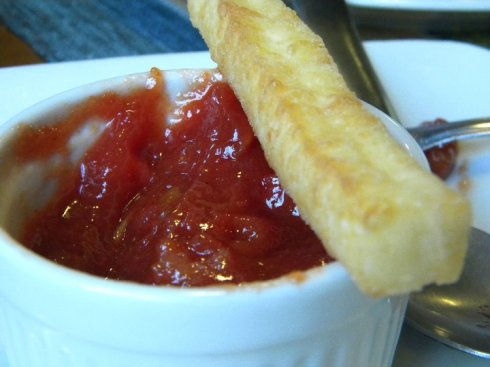
Fried curd cheese with guava jam. It looks like French fries and catchup, but let me assure you it's much better than that.
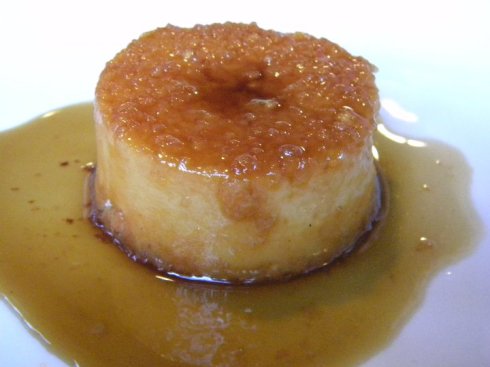
"Pudim de cachaça" - A "cachaça" (distilled from fermented sugar cane juice) flan, made with tapioca, "cachaça" and coconut, topped with a molasses and "cachaça" sauce. It's almost impossible to be more Brazilian than that.
The lows.
Ok, no place is perfect, and “Aconchego Carioca” is no exception. Two lows:
1. The service – Most waiters were more than good, but I’m still waiting for a dish to lay some pork ribs (the bones, of course).
2. The “winter squash with shrimp” – This is a dish you can find in restaurants along most of the Brazilian coast, even though it’s considered to be typical the northeast region of the country and one of the best dishes of “Aconchego Carioca”. Sorry, but I don’t agree. The shrimp was a bit overcooked, it had not enough sauce, but what really made me dislike it was the excess of cream cheese (“requeijão”).
Over all the experience was fantastic. Unforgettable in fact. For an amateur blogger and food lover like me to share a meal chatting with the Troisgros family is priceless. Many thanks to chef Mauro Colagreco for making this possible (I’m sad that you were not able to be present as well), and to the Troisgros family for making me feel like an old friend.


